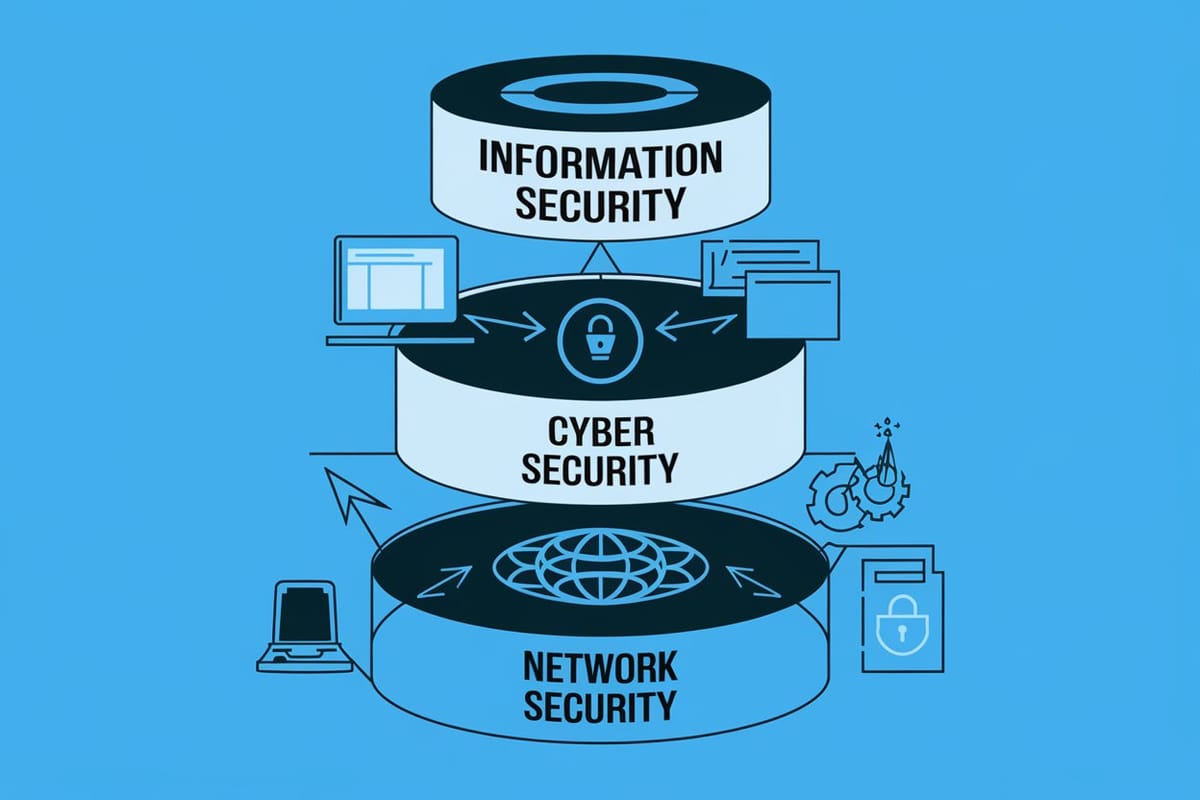Cybersecurity vs Information Security: Understanding Key Differences
Cybersecurity vs. Information Security: What’s the Difference and How They Protect Your Data

Cybersecurity vs. Information Security: What’s the Difference and How They Protect Your Data
Introduction
In today's digital world, protecting data is crucial for both individuals and businesses. We handle sensitive information every day, from personal details to business documents. Two key areas of data protection are cybersecurity and information security. Although these terms are often used interchangeably, they focus on different aspects of safeguarding data.
This blog breaks down the key differences between cybersecurity and information security, how they work together, and why both are essential for keeping your data safe.
What is Cybersecurity?
Cybersecurity is the practice of defending digital systems, networks, and data from online threats such as hacking, malware, and phishing attacks. It acts as a protective barrier, keeping everything from your browsing activities to cloud-stored data safe.
Cybersecurity tools like firewalls, antivirus software, and encryption prevent unauthorized access and block hackers from compromising your systems. Simple practices, such as using strong passwords and avoiding suspicious links, also contribute to basic cybersecurity.
As technology and the internet continue to evolve, cybersecurity remains crucial to protect personal data and large-scale systems like banking networks.
What is Information Security?
Information security focuses on protecting all forms of data, whether digital or physical. It ensures the confidentiality, integrity, and availability of data by preventing unauthorized access, whether stored on computers or in physical files.
For example, locking up important paper documents in a secure place or encrypting sensitive digital files both fall under information security. It involves creating security policies, procedures, and access controls to manage risks and maintain data safety.
Key Differences Between Cybersecurity and Information Security
Cybersecurity Information Security Protects digital systems, networks, and data from online threats. Protects data in both digital and physical forms. Deals with threats like hacking, malware, and phishing. Deals with unauthorized access, theft, and data loss. Focuses on the digital realm. Covers all types of data—digital, physical, and even verbal. Uses firewalls, antivirus software, and encryption to stop attacks. Focuses on access control, risk management, and secure policies.
How Cybersecurity and Information Security Work Together
While their approaches differ, cybersecurity and information securityoften overlap. Both aim to keep data safe from unauthorized access. For instance, encryption is used in both fields to protect data, whether stored digitally or in physical systems.
During a security incident, cybersecurity teams focus on stopping the attack (e.g., isolating malware), while information security teams work on safeguarding the data and restoring any damage.
Governance and Compliance
Both fields are governed by strict regulations, like the General Data Protection Regulation (GDPR) in Europe and HIPAA (Health Insurance Portability and Accountability Act) in healthcare. These regulations require businesses to follow best practices, such as encrypting sensitive data and conducting regular audits, to avoid legal penalties and maintain customer trust.
Incident Response: A Shared Responsibility
When a security incident occurs, both cybersecurity and information security teams respond. Cybersecurity professionals work to stop the attack, while information security experts focus on protecting the compromised data. Together, they assess the situation, resolve the issue, and improve security protocols to prevent future incidents.
Conclusion
Cybersecurity and information security are both critical in today's world. Cybersecurity defends against digital threats, while information security protects all forms of data, whether it's stored digitally or physically. By understanding how they work together, you can ensure comprehensive data protection.
Whether you’re an individual or a business, staying proactive with both cybersecurity and information security is key to keeping your data secure and accessible.
Call to Action
Is your data secure? Take time to review your security practices. Strengthen your passwords, enable two-factor authentication, and make sure your data—whether online or offline—is properly protected.
